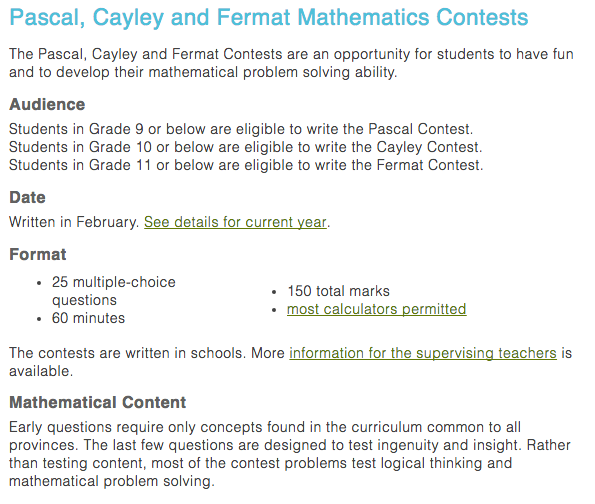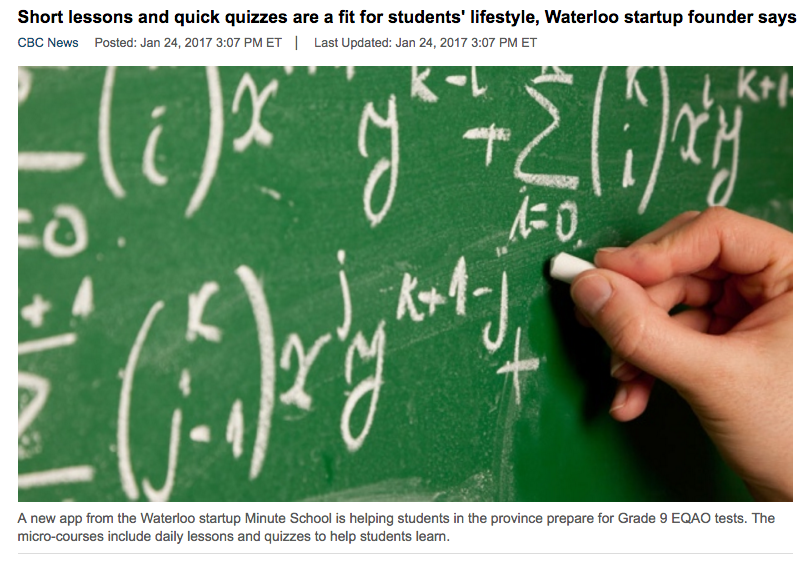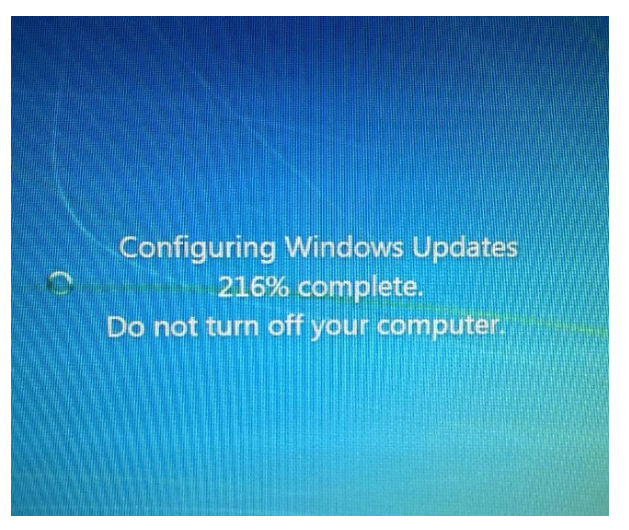|
This week's Student of the Week is Peter P.
I never knew Peter until this year. He's a quiet guy and I never heard him say much. Then one day... Me: These text books we use in Calculus are very old. Peter: You mean like you? I was stunned. It was pretty darn hilarious because it was so unexpected. Now I have come to see that this was not a "one-off". Peter is a VERY funny guy. And a very smart guy too. He is the first KG student I know of who is taking three grade 12 Math classes at the same time: Foundations 12 (with me), Calculus 12 (with me), and PreCalculus 12 (with Mr Habibian). That's a LOT of Math homework!!! But Peter is excelling in all three classes (I checked with Mr H). Just look at that work ethic in the photo above! Talk about a good student: friendly, funny, super-successful! I'm very happy to be teaching you this year, Peter. Keep working on those infinity signs - you'll get it right one of these days!! I strongly urge you to consider writing this Math contest. It's fun!
The date is Tuesday, February 28. You would miss Block 1B. Cost is $4 but you only pay $2!!!! We will pay the other $2. Sign-up with me (bring your $2) before Feb 8. Thanks! In just 10 minutes a day, you, too, can be good at math.
No, it's not a cheesy infomercial. It's Minute School: An app by a new Waterloo startup that has micro-courses for high school and university students. The courses go over subjects they're learning in school, quiz them and help them prepare for tests and exams. This week's Student of the Week is Ranya A.
I first taught Ranya in Math 8. She was a quiet and focused student. She always had great insights to offer during class discussions and performed VERY well on tests. At Parent - Teacher interviews in December, both her (lovely) mother and myself expressed some concern that Ranya may be getting bored with the grade 8 material (which was proving to be very easy for her). As such, we made the decision to move her to Math 9 immediately (I can't remember whose class we moved her to but it was not mine). I was sorry to see her leave my class and also a little nervous that we had moved her too late in the year... she still needed to catch up on the first three months of material from Math 9. In retrospect, WHAT WAS I WORRIED ABOUT?!?! Ranya actually came to see me a few times after school in the weeks after she left my class. She was working through the grade 9 material she had missed and had a few questions. What kind of grade 8 student shows THAT kind of responsibility?!? And fast forward to grade 12 where Ranya is, without a doubt, one of the very strongest math students in our school. In fact, after having the pleasure to teach Ranya in Math 8 (for three months), PreCalculus 10, PreCalculus 11, PreCalculus 12, and Calculus 12 I can honestly state that Ranya is one of the very best Math students I have EVER encountered in my twenty years of teaching. I am so pleased that she will be putting her exceptional Math skills to good use when she starts her Engineering degree next year. Some of the things I love about Ranya (which are even more important than her stellar Math skills):
Ranya, it has been a total pleasure to spend time with you over the past five years. Teaching you has been rewarding, effortless, and fun. When I think about what awaits you in the future, it honestly excites me. Talk about a "can't-miss prospect"! It makes me proud to think I made even the tiniest of differences in the sort of Math student you have become. Thank you for all the incredible work that you have done in my class. Good luck and I will miss you! |
P. WadgeI am your teacher. Obey me. Archives
June 2021
Categories
All
|





 RSS Feed
RSS Feed